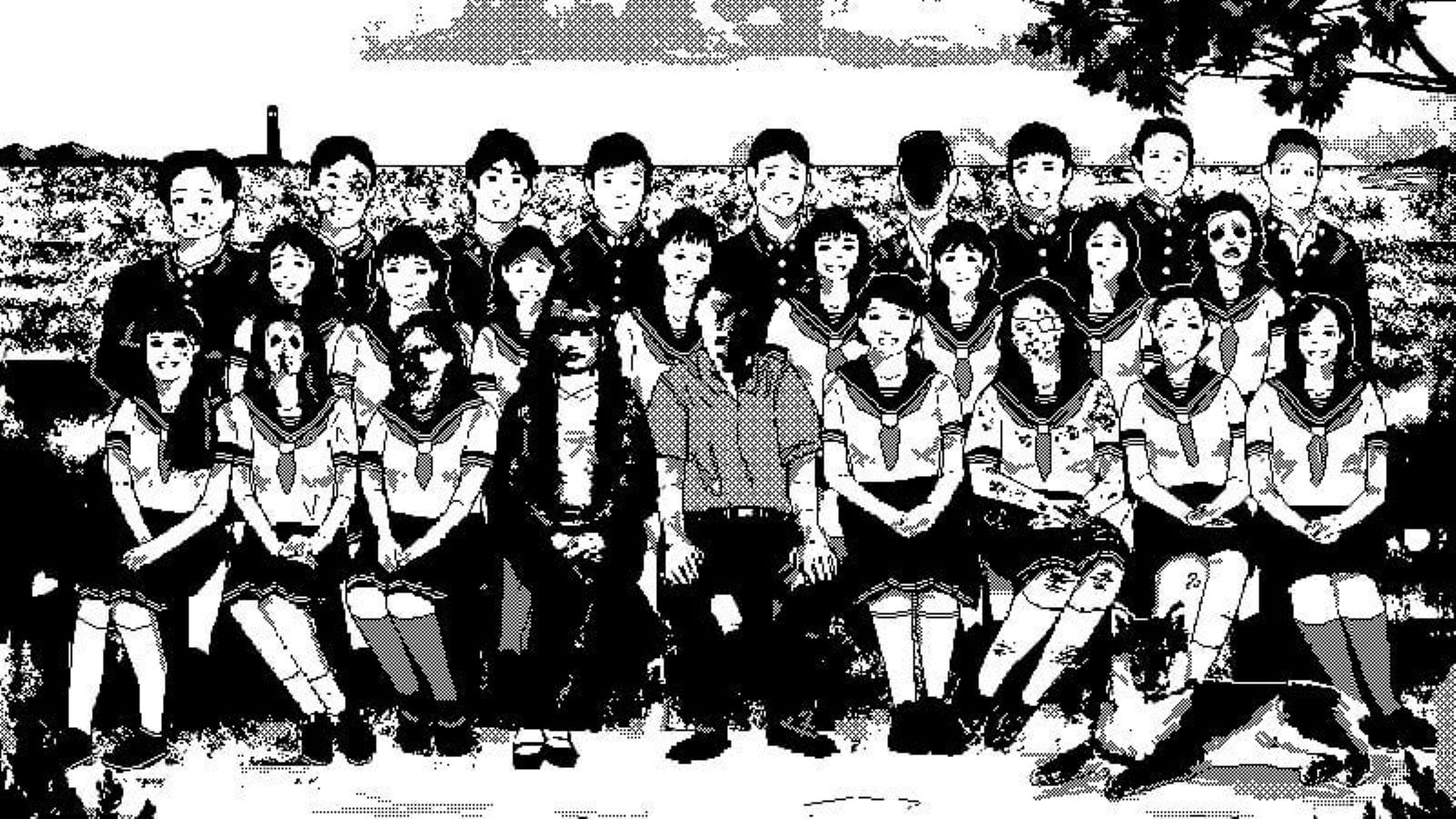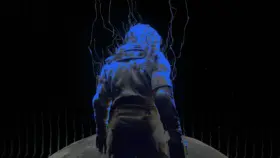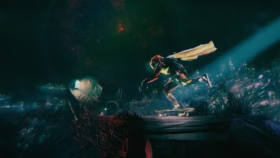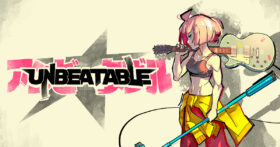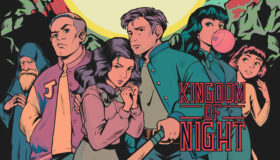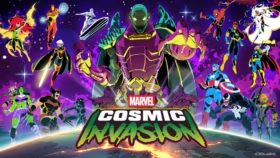In The Enigma of Amigara Fault – maybe the most famous of horror manga author Junji Ito’s short stories – a young man forces himself into a person-shaped hole that has opened up on the side of a mountain following an earthquake. As he climbs in, the man shouts “This is my hole! It was made for me!” This panel has become a meme, posted when something suits a person’s very specific aesthetic interests. It’s also how many people – including myself, and evidently World of Horror solo developer Paweł Koźmiński – feel about the work of Junji Ito himself.
To say that World of Horror is inspired by the works of Junji Ito, particularly his opus Uzumaki, would be an understatement. Visual homages and references to Ito’s work abound here; the game is full of Easter eggs and clever references to various pieces of pop culture and folklore (including many that I’m sure went over my head), but it’s Ito’s work that shines through the strongest. As a fan of Ito, I went into World of Horror excited to see a game paying such clear homage to the man’s work, and in this regard it does not disappoint. But when I consider the game outside of this context, my feelings are a little more mixed.
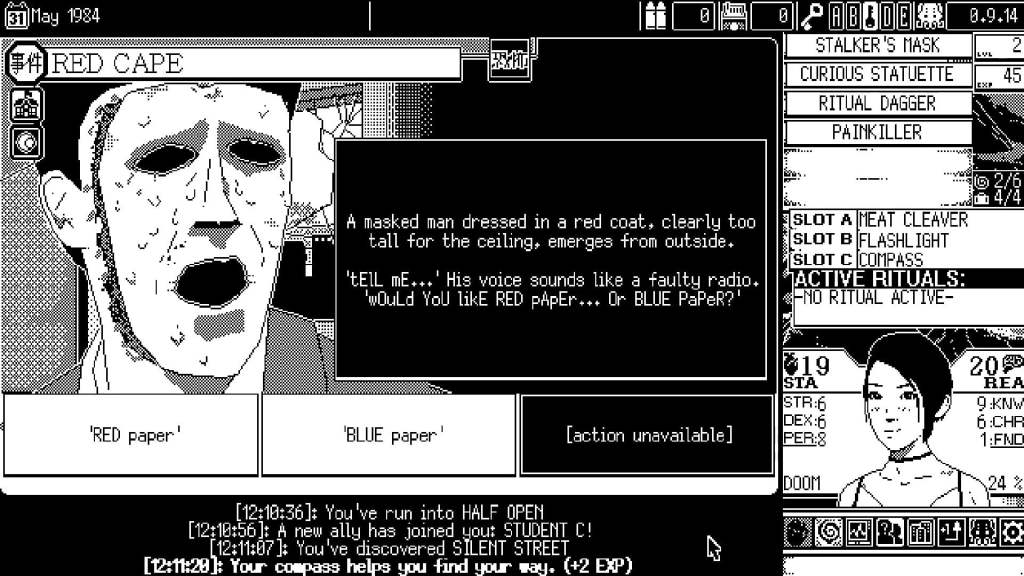
World of Horror is an RPG roguelike set in a fictionalised version of Shiokawa, Japan in the 1980s. In each run, your objective is to free the town of a haunting evil presence that has taken up occupancy in the local lighthouse (one of the more pronounced Uzumaki nods). You choose a character, some details about their background, and a few other modifiers before beginning (including which Eldritch Old God is haunting the town), and once a run starts you need to go and solve five randomly chosen “mysteries” to unlock the lighthouse.
The entire game is framed, cleverly, as a found object – in view on the screen at all times is an old monitor outputting, at most, two colours at a time. The idea is that you’re playing a game from the 1980s, upscaled into high definition – all the art in the game was lovingly rendered in Microsoft Paint, of all things, and the hyper-detailed assets made from that limited tool set definitely impress.
The mysteries, which make up the bulk of the World of Horror experience, vary in depth, intrigue, and horror. There are 24 of them in total as of version 1.0, and most of them unfold in the same way. At the bottom of the screen are tabs for different locations; you can click between them to explore, which usually means playing through a random event where your odds of “success” or “failure” (minor stat bumps up or down) are determined by your character’s statistics and a hidden dice roll.
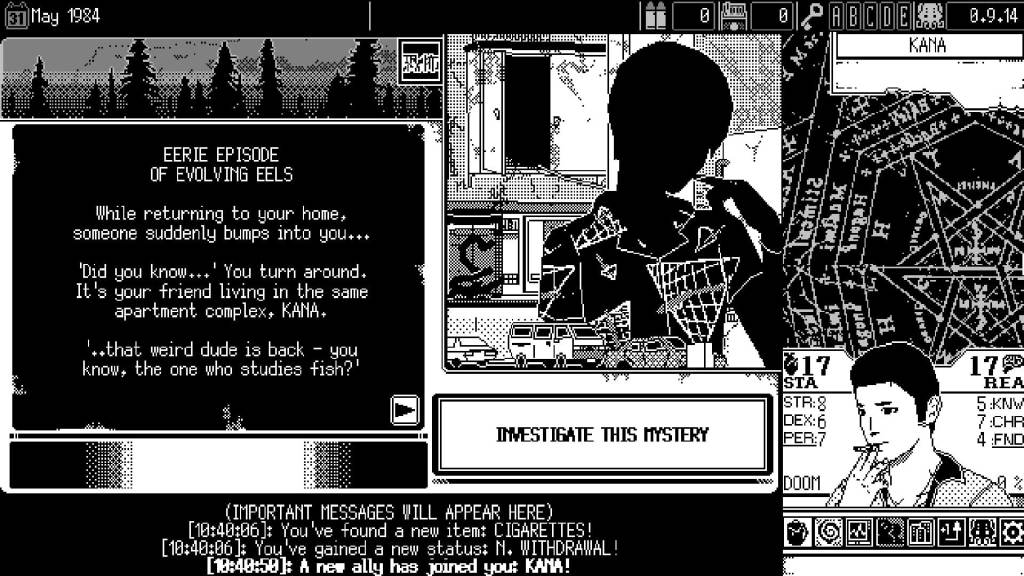
You can collect allies, weapons, spells, and statuses along the way by fulfilling objectives and leveling up. It’s more complicated to explain than it is to play; although it has a deluge of mechanics and things to track, World of Horror is a menu management game at heart, and in practice it’s quite straightforward and a little repetitive. If your “stamina” or “reason” stats drop to zero or below, or the town’s “Doom” rating hits 100%, the run will end in failure; you must manage these numbers as best you can during a run, which requires a bit of strategic thinking, risk management, and good luck.
There are some mysteries that take a slightly different tact, and these tend to be the most exciting. There’s one, for instance, where you become trapped in your apartment, Silent Hill 4 style – navigating through that mystery means exploring the changes to your apartment every day and getting used to a new rhythm, and the UI changes to match it. Similarly, a mystery about exploring a school for the items necessary to enact a ritual against a cursed being gets a bit more inventive than most, and finding the best “ending” here is quite satisfying. It’s a shame that there’s only a handful of such mysteries – you’ll likely be getting repeats of missions from your second or third run onwards, and with a lot of them feeling quite samey, this leads to a feeling of overfamiliarity within a few hours.
A few times per mystery you’ll likely experience a turn-based combat encounter, in which one of the game’s monsters will make an attempt at your life, and you can battle them with any weapons, allies, or spells you’ve attained. Combat is a repetitive affair – you have 200 units of time to use, and can line up offensive and defensive actions, each with different time values, and then watch them play out. I would often find myself purchasing a hammer during the first mystery of a run, then using a move combination that ensured I’d land one strong hit and then likely dodge the enemy attack, for every combat encounter. No matter how you play things, combat is repetitive – there’s not much incentive to be creative against most enemies when doing the same combo repeatedly works.
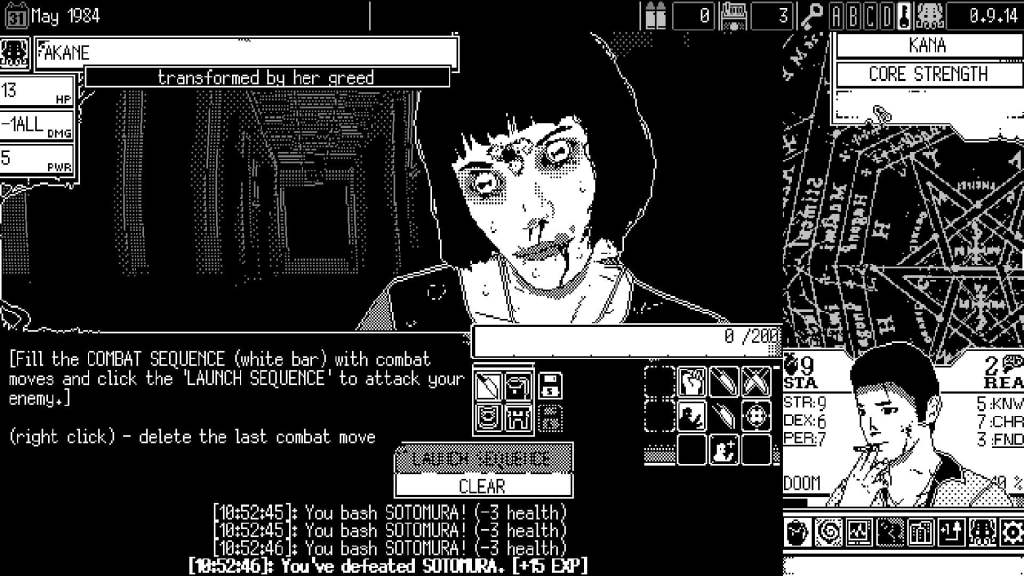
If your enemy is a ghost, you may have to defeat them through spiritual action – figuring out the right sequence of claps and bows you must perform to send them away. This is a fun idea, but frustrating in practice, as it turns certain battles into a matter of trial-and-error – you’re told how many correct actions you had last time, but not which ones were correct, and you just have to keep trying combinations until one works.
The rate of unlocking new content is quite slow, too. After six hours and a few successfully completed runs, I was struck by how much repetition I was experiencing; new allies, items, and events were unlocking at a slow pace, but finding more meant replaying the game often. There’s some variety in World of Horror based on choices you’ve made, but not so much variety that every run feels extremely distinct; your objectives or struggles may differ a bit, but fundamentally the game feels the same on each run.
It’s admittedly interesting when you find a new option presenting itself on the fifth run of a mystery, because of some minor change in your character build, but the conditions for activating some of changes are very specific, and tied to unlocks that will take most players a very long time to earn. You really need to grind World of Horror to get the most out of it, and the balance isn’t quite right. Even a successful run can feel anticlimatic; it’s rare that I felt a strong sense of achievement, and more common that I’d be frustrated seeing how many options and characters remained locked. While I was still finding enjoyment in these later runs, and testing out new unlocks is exciting, there’s a definite sense of diminishing returns.
Beyond all of this, World of Horror is not actually very scary. It has the aesthetics of horror, particularly Japanese body horror, but there were only a handful of (admittedly well-done) moments in the game that spooked me. Again, I think of Junji Ito, and the way he often shows characters reacting to something in horror before revealing the image to the reader on the next page, letting their imaginations run wild. World of Horror will often describe its monsters to you in dialogue before you see them, lessening the impact, even when the designs are quite wonderful and disgusting. Repetition also leads to familiarity, and it becomes increasingly difficult for the game to shock you, the more you play. There’s nothing in the game that got me as good as the extremely good launch trailer.
Reviewing a game from a solo developer, especially one with so much obvious love and care poured into it can be difficult. As a calling card for Koźmiński, World of Horror is astonishing – a stunning achievement, an incredible piece of work. As a game? It’s not bad. World of Horror will impress you more than it scares you, but it really is very impressive, at least. For all its faults, fans of Junji Ito would be hard pressed to find a more loving homage.
3 stars: ★★★
World of Horror
Platforms: PC, Mac,
Developer: Paweł Koźmiński
Publisher: Ysbryd Games
Release Date: 19 October 2023 (PC), 8 December 2023 (Consoles)
The PC version of World of Horror was provided and played for the purposes of this review. GamesHub reviews are scored on a five-point scale GamesHub has affiliate partnerships. These do not influence editorial content. GamesHub may earn a small percentage of commission for products purchased via affiliate links.
